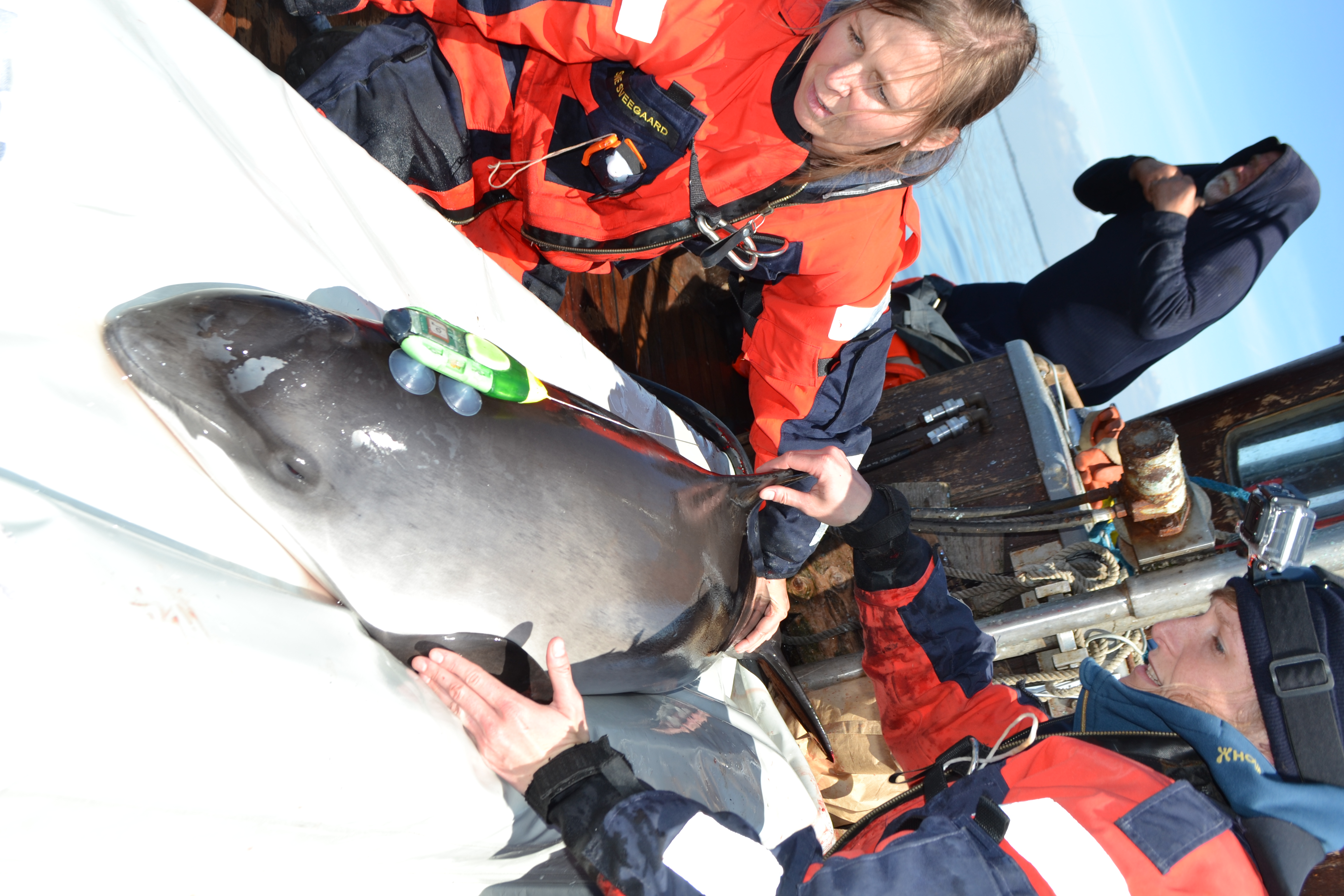Noise from ships scares porpoises
A new study shows, for the first time, that porpoises flee from and stop feeding when disturbed by heavy ship noise.
![[Translate to English:] Link til foto [Translate to English:] Link til foto](/fileadmin/_processed_/9/c/csm_DSC_1081r_5948201ff5.jpg)

Porpoises communicate with each other using sounds. Therefore, they are highly sensitive to noise, such as ship noise. And the Danish belts and sounds are some of the most heavily trafficked waters in the world.
An international research team led by researchers from Aarhus University successfully fitted electronic tags on the backs of seven porpoises with the aim to obtain insight into how they react to disturbance of normal living conditions by ship noise.
The groundbreaking data are published today in the journal ’Proceedings of the Royal Society B’ with post doc Danuta Wisniewska as main author.
Lunch is disturbed
”When the ship noise exceeds a certain level, the porpoises stop feeding. At very high sound levels the animals dive to the bottom and move fastly along this, and they cease emitting the biosonar clicking sounds that they use when searching for food,” says Jonas Teilmann.
The porpoise is Denmark’s smallest whale and researchers have long been concerned about how its living conditions are influenced by the intensified human activity at sea.
“Our measurements show that the porpoises do respond to heavy ship noise. It is still too early to say, though, what this means to the well-being of the porpoises, their production of offspring and, in the long term, their survival,” says Professor Peter Teglberg Madsen, Aarhus University, who is one of the researchers behind the sensational findings.
The project is a collaboration between the Department of Bioscience, Aarhus University, Denmark, University of St. Andrews, Scotland, and University of Veterinary Medicine Hanover, Germany. The project is funded by The German Federal Agency for Nature Conservation (Bundesamt für Naturschutz – BfN).
Video of release of porpoise after fitting of electronic tags.
Sound recordings of porpoise and passing high-speed ferry between Aarhus and Odden.
Further information:
Senior Researcher Jonas Teilmann
Department of Bioscience
Aarhus University
Mail: jte@bios.au.dk
Tel.: +45 2142 4291
Professor Peter Teglberg Madsen
Aarhus Institute of Advanced Studies
Aarhus University
Mail: peter.madsen@aias.au.dk
Tel.: +45 5177 8771
Read the paper here: http://rspb.royalsocietypublishing.org/content/285/1872/20172314
See video of how porpoises react to ship noise (27 minutes within the broadcast from the German channel ARD): http://www.ardmediathek.de/tv/Erlebnis-Erde/Wale-vor-unserer-K%C3%BCste/Das-Erste/Video?bcastId=10317598&documentId=49783578
